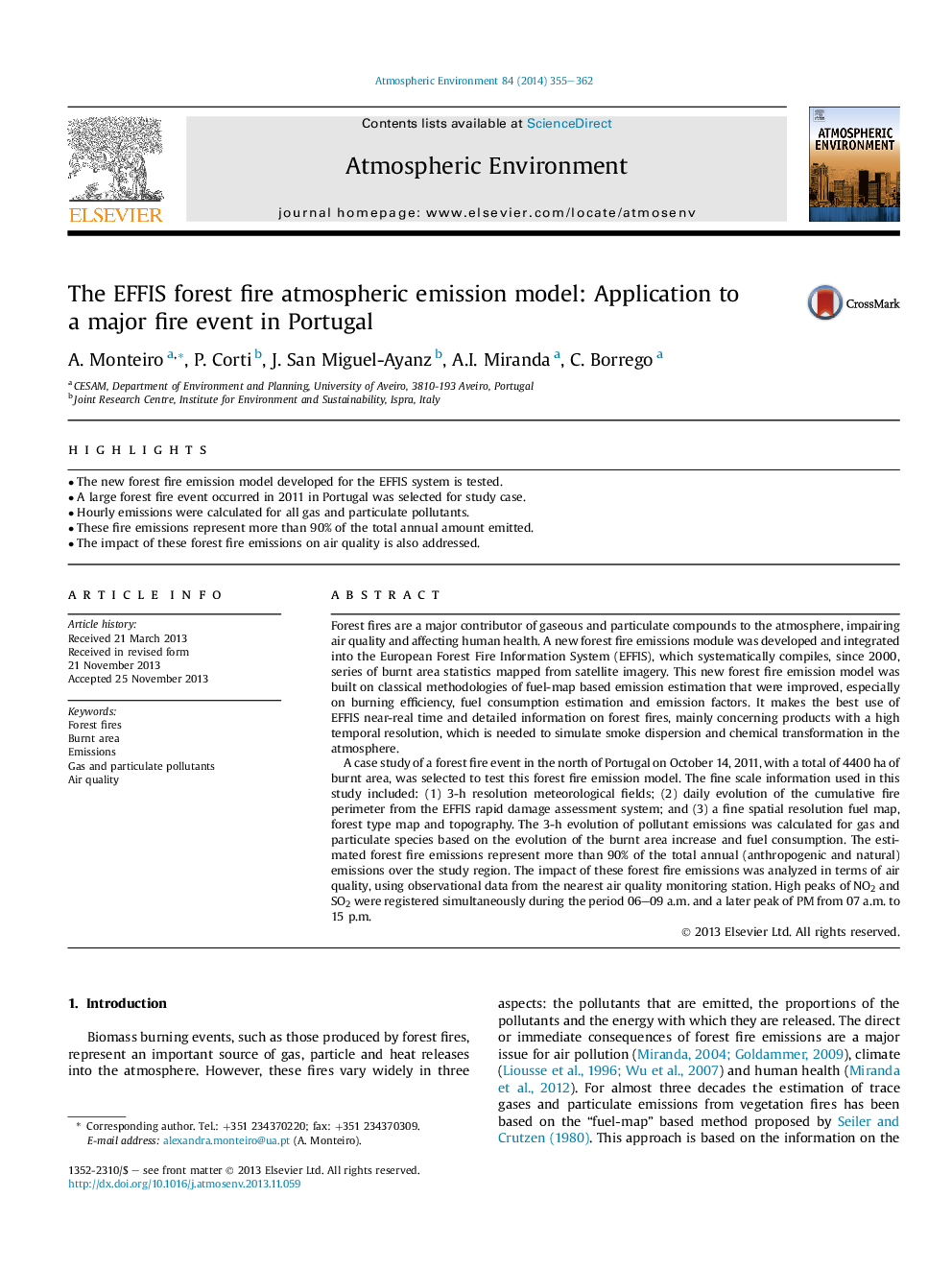| Article ID | Journal | Published Year | Pages | File Type |
|---|---|---|---|---|
| 6341120 | Atmospheric Environment | 2014 | 8 Pages |
Abstract
A case study of a forest fire event in the north of Portugal on October 14, 2011, with a total of 4400 ha of burnt area, was selected to test this forest fire emission model. The fine scale information used in this study included: (1) 3-h resolution meteorological fields; (2) daily evolution of the cumulative fire perimeter from the EFFIS rapid damage assessment system; and (3) a fine spatial resolution fuel map, forest type map and topography. The 3-h evolution of pollutant emissions was calculated for gas and particulate species based on the evolution of the burnt area increase and fuel consumption. The estimated forest fire emissions represent more than 90% of the total annual (anthropogenic and natural) emissions over the study region. The impact of these forest fire emissions was analyzed in terms of air quality, using observational data from the nearest air quality monitoring station. High peaks of NO2 and SO2 were registered simultaneously during the period 06-09 a.m. and a later peak of PM from 07 a.m. to 15 p.m.
Related Topics
Physical Sciences and Engineering
Earth and Planetary Sciences
Atmospheric Science
Authors
A. Monteiro, P. Corti, J. San Miguel-Ayanz, A.I. Miranda, C. Borrego,
